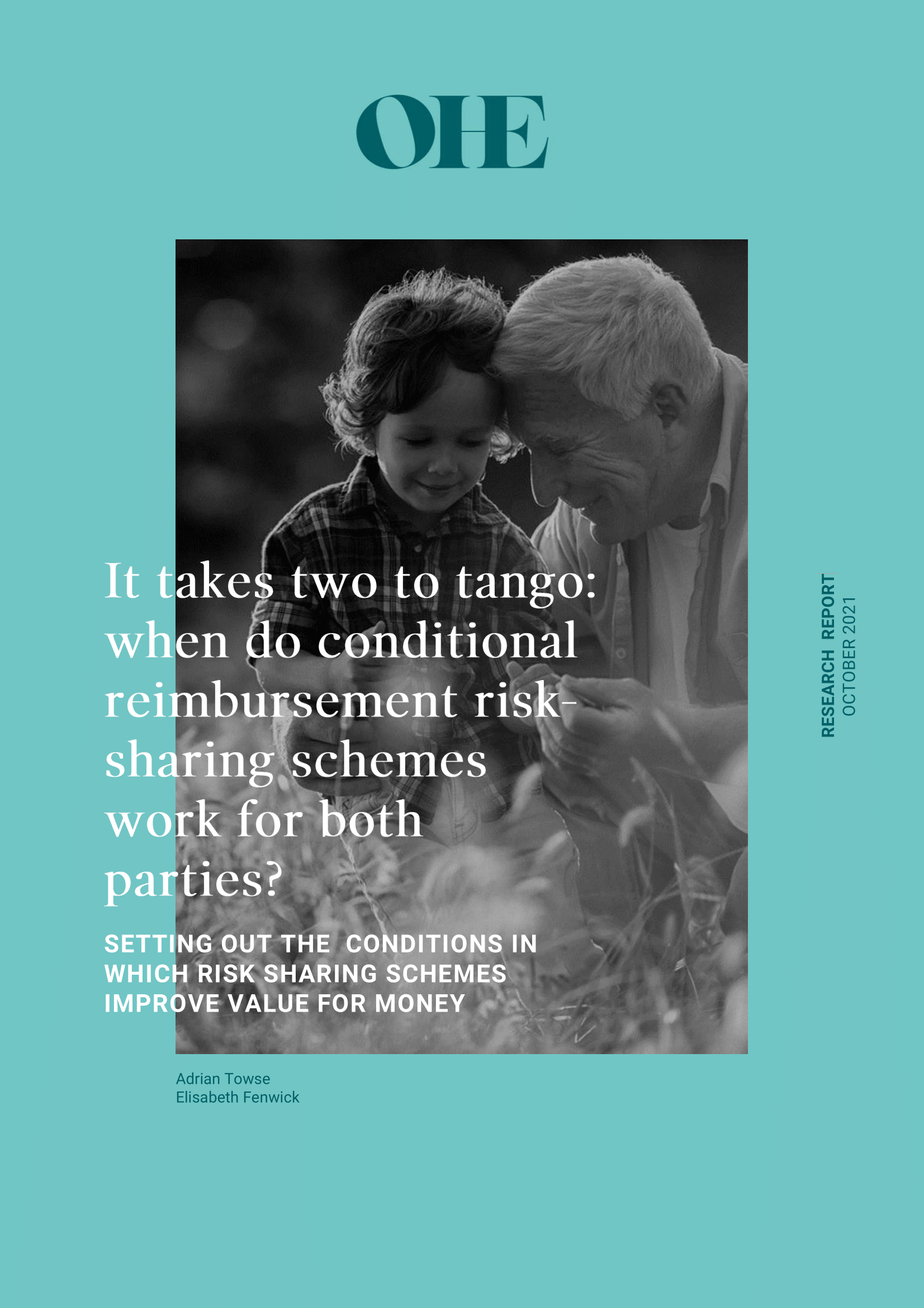It Takes Two to Tango: When do Conditional Reimbursement Risk-Sharing Schemes Work for Both Parties?

The combination of rising drug costs in the US and increasing financial stress for individual patients has triggered intense national concern. One target has come under particular scrutiny: rebates. A new report published by ICER and the OHE describes how alternatives to the current rebate system offer potential disadvantages as well as potential benefits. It outlines evidence presented to date and key questions that still need to be answered.
The combination of rising drug costs in the US and increasing financial stress for individual patients has triggered intense national concern. One target has come under particular scrutiny: rebates. A new report published by the Institute for Clinical and Economic Review (ICER) and the Office of Health Economics describes how alternatives to the current rebate system offer potential risks or disadvantages as well as potential benefits. It outlines the evidence presented to date and the key questions that still need to be answered.
Drug makers in the US face no federal process whereby prices are evaluated in comparison to evidence of clinical benefit, but they must negotiate with a myriad group of payers including both insurers and pharmacy benefit managers (PBMs). Discounts to the list price of drugs (rendered post-sale as rebates) are negotiated in exchange for preferential formulary placement, which increases sales. Rebate agreements are often quite complex, with the possibility of “stacked” rebates paid to PBMs as combined payments related to formulary placement, variously named administrative fees, price increase protection guarantees, and other programmes.
In preparing the paper the authors undertook a focused literature review and evaluated the written responses to the U.S. Department of Health & Human Services (HHS) Blueprint on drug pricing from key stakeholders, including all participants in the ICER membership programme. Ten interviews were conducted covering PBMs, public and private payers, manufacturers, academics, benefit consultants, and trade associations. An earlier version of this White Paper was sent out as a pre-read for the ICER members Policy Summit. This version of the paper takes account of the discussion at that meeting.
Rebates are a key negotiating tool for payers and help produce a lower ‘net’ price for drugs that can help reduce the overall costs of drug spending. But for many years the PBM business model has included a revenue stream gained by retaining a per cent of the absolute rebate amount they return to plan sponsors. Drug makers argue that this ‘rebate economy’ forces them to increase list prices in order to offer ever larger rebates to PBMs to gain preferred formulary status. The effect of rebates in lowering net prices may reduce plan sponsor costs and therefore help moderate the cost of insurance premiums for all plan members. However, some plan sponsors have suggested that the profitability of the rebate model provides an incentive for PBMs to prioritise high-rebate drugs that might not have the lowest net cost for the plan sponsor. All would agree that higher list prices hurt many patients who need ongoing drug treatment, since the increase in the use of co-insurance and of high-deductible plans has meant that rising numbers of patients are required to pay their out-of-pocket share for drug coverage in relation to the list price, not the negotiated rebate price.
There are three major alternative options to the current rebate model. The first two options represent rebate ‘reform’ and may be implemented separately or, as many have argued, combined, but it is important for policymakers to consider the potential advantages and disadvantages of each element separately. The third option would involve eliminating rebates and moving exclusively to a system of upfront discounts.
Taking stock of the options for alternative rebate models, each with its own potential advantages and disadvantages, most stakeholders in the health care system realize that some form of change to the current paradigm of rebates is both needed and inevitable. But the way forward is fraught with risk and uncertainty, with deep trade-offs between short-term feasibility and long-term goals evident at every step. This White Paper is intended to chasten policymakers who might have seen eliminating rebates or any of the other options as an easy, clean procedure. The authors equally hope that it will hearten and inform those who wish to take a thoughtful, careful approach to near-term reform while laying the groundwork for a greater transformation to come.
The paper can also be downloaded from the ICER website here.
Citation
Cole, A., Towse, A., Segel C.S., Henshall, C., Pearson, S.D., 2019. Value, Access, and Incentives for Innovation: Policy Perspectives on Alternative Models for Pharmaceutical Rebates. OHE Research Paper, London: Office of Health Economics.
Related research
Hampson, G., Towse, A., Dreitlein, B., Henshall, C. and Pearson, S., 2018. Real World Evidence for Coverage Decisions: Opportunities and Challenges. OHE Research Paper, London: Office of Health Economics. RePEc.
Pearson, S., Dreitlein, B., Towse, A., Hampson, G. and Henshall, C., 2018. Understanding the Context, Selecting the Standards: A Framework to Guide the Optimal Development and Use of Real-World Evidence for Coverage and Formulary Decisions. OHE Research Paper, London: Office of Health Economics. RePEc.
Hampson, G., Towse, A., Pearson, S.D., Dreitlein, B. and Henshall, C., 2017. Gene therapy: evidence, value and affordability in the US health care system. Journal of Comparative Effectiveness Research 7(1). DOI. RePEc.